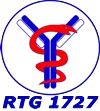Host Genome x Diet Interaction QTL Database 1.0.
The database is the interface to Jbrowse which enables visualization of host genome (Mus Musculus) QTL and its interaction with diet regulating various physiological and patho-physiogical phenotypes.
The interface also provides SNPs and INDELs from four founder strains i.e. BxD2/TyJ, NZM2410/J, CAST/EiJ and MRL/MpJ for fine-mapping QTL to candidate genes.
Nurture, nature and traits
With diet being a major constituent of one’s environment we hypothesized that it may account for a significant proportion of the missing heritability. Our interest in this topic was further provoked by the clinical observation of the metabolic and cardiovascular co morbidity in chronic inflammatory diseases. One school of thought considers inflammation as a key driver of metabolic and cardiovascular co morbidity in chronic inflammatory, while the other, suggests it may be a result of a joint genetic control. Meta-analysis of GWAS data, however, has documented little overlap of risk alleles between inflammatory and metabolic and cardiovascular diseases. In contrast, the increased food intake was suggested as the more probable risk factor for development of these diseases. Nevertheless, little experimental evidence exists in support of either hypothesis. To address this controversy and to unravel the impact of diet on the missing heritability in complex traits, a large colony of advance intercross outbred mice line (AIL) was exposed to three different diets; namely caloric restriction, Western and control diet. A total of 1,154 mice survived the 6 months observation period and were extensively pheno- and genotyped. Interestingly, in many traits, compared to genotype and gene-diet interaction, diet explained most of the phenotypic variation. Based on the publicly available and newly generated genome sequences of the parental mouse strains of the intercross line, the QTL, associated to many traits in our study, were fine-mapped to mutations in few genes. Most importantly, the landscape of genomic association of traits changed considerably when diet was considered. This database is dedicated for visualization of such traits. The database includes results from additive QTL (host genome) and interactive QTL (host genome x Diet or Sex) mapping. User can also compare the QTLs associated to various traits simaltaneously for overlaps. To fine-map QTL to the genes level resolution, the SNPs and INDELs present in four founder strains can also be visualized in same window.



